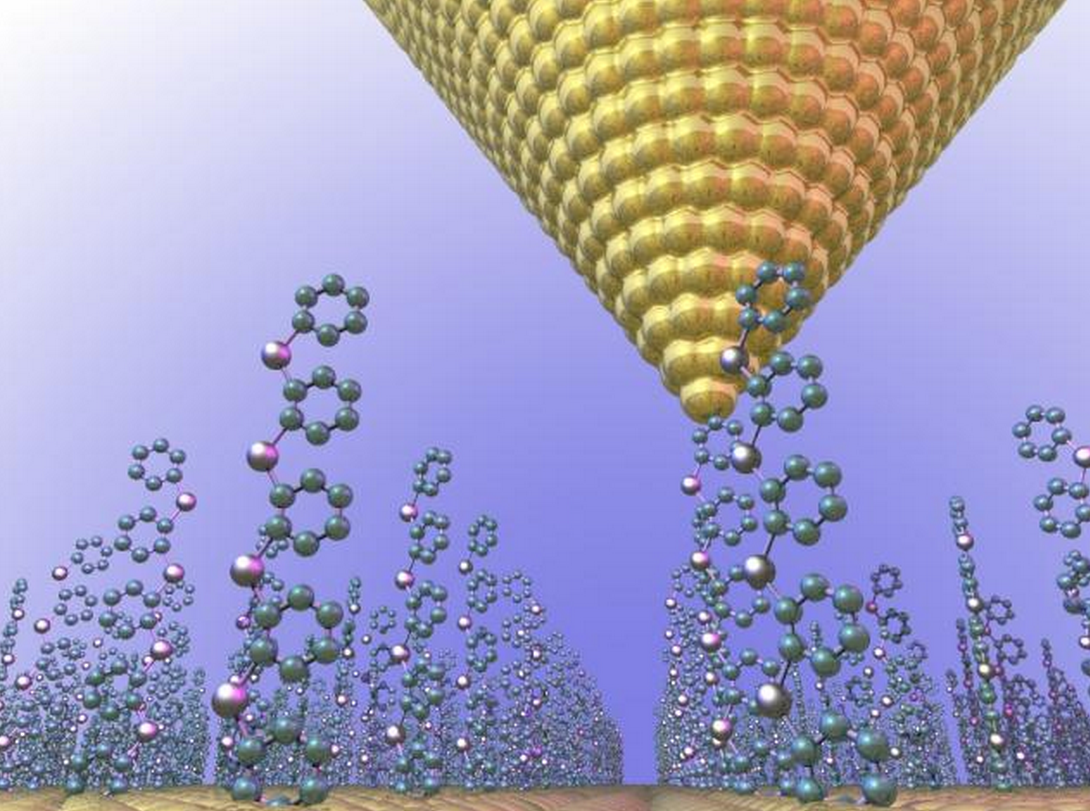Quantum thermoelectric device turns waste heat into power
September 27, 2010

Electron waves traveling along the backbone of each molecule interfere with each other, leading to the buildup of a voltage between the hot and cold electrodes (the golden structures on the bottom and top). (Rendering by Justin Bergfield)
University of Arizona physicists have discovered a new way to harvest waste heat and turn it into electrical power.
Using a theoretical model of a molecular thermoelectric device, the technology holds great promise for making cars, power plants, factories and solar panels more efficient,
“Thermoelectricity makes it possible to cleanly convert heat directly into electrical energy in a device with no moving parts,” said lead author Justin Bergfield, a doctoral candidate in the UA College of Optical Sciences.
Bergfield designed a benzene ring circuit in such a way that in one path the electron is forced to travel a longer distance around the ring than the other. This causes the two electron waves to be out of phase once they reunite upon reaching the far side of the benzene ring. When the waves meet, they cancel each other out in a process known as quantum interference. When a temperature difference is placed across the circuit, this interruption in the flow of electric charge leads to the buildup of a voltage between the two electrodes.
“Solar panels get very hot and their efficiency goes down,” Charles Stafford, associate professor of physics said. “You could harvest some of that heat and use it to generate additional electricity while simultaneously cooling the panel and making its own photovoltaic process more efficient.”
Car or factory exhaust pipes could also be coated with the material, less than 1 millionth of an inch thick, to harvest energy otherwise lost as heat and generate electricity.
Reference: Giant Thermoelectric Effect from Transmission Supernodes. Justin Bergfield, Michelle Solis, and Charles Stafford. ACS Nano Sept. 2010.
More info: University of Arizona news
